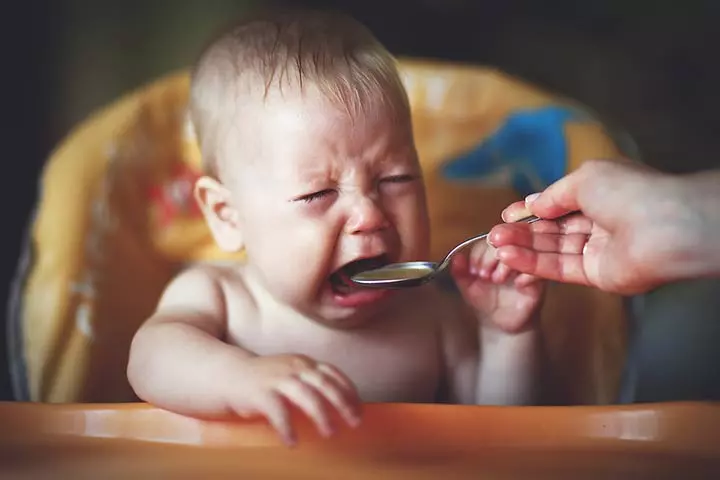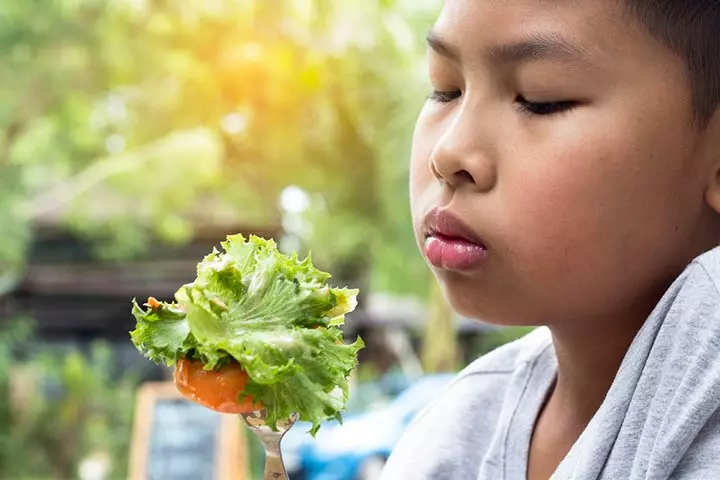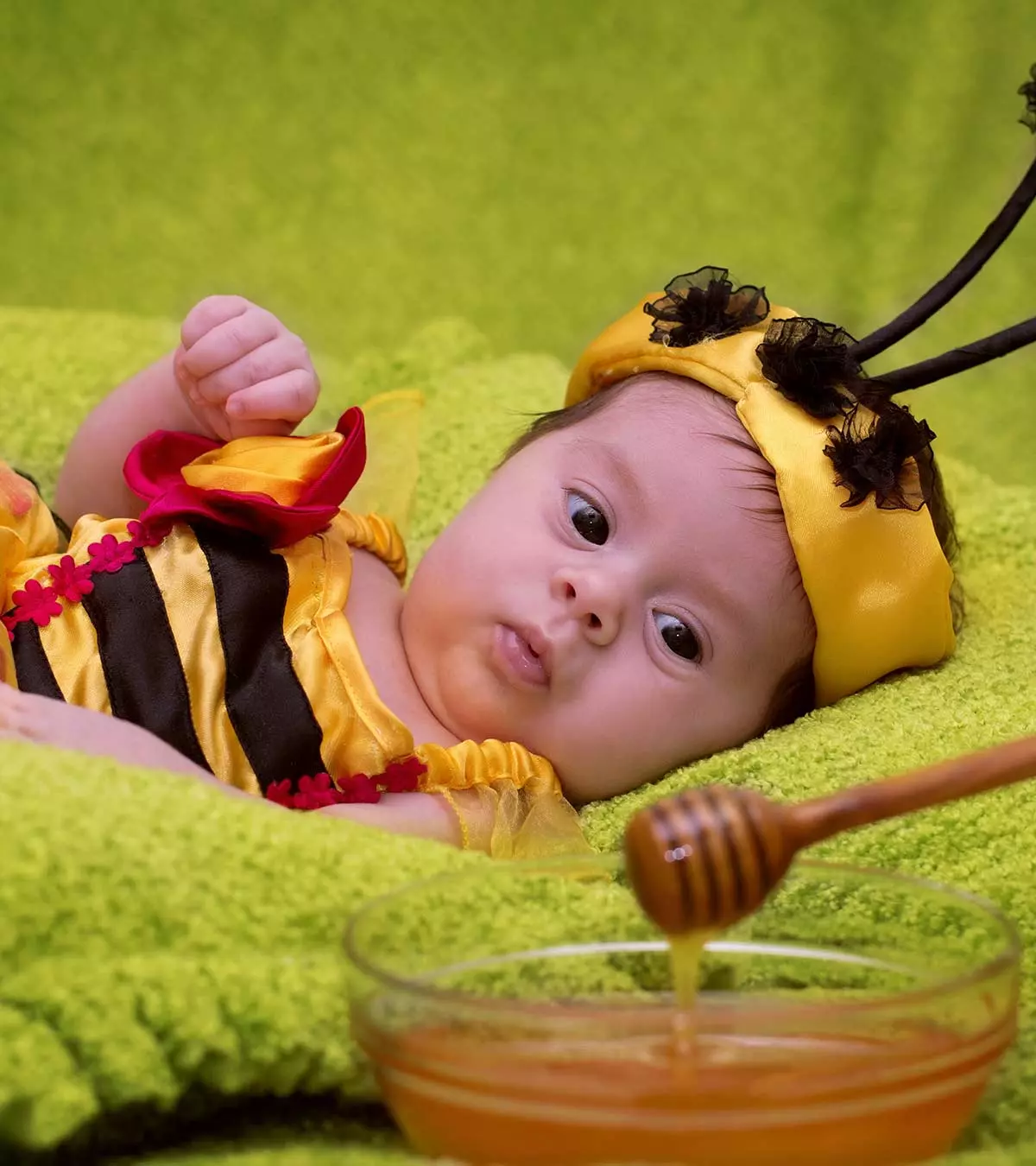
Image: iStock
Picky eating in children is a cause for concern for parents. There are many reasons for picky eating: the late introduction of lumpy foods in a child’s diet, pressurizing the child to eat forcefully, to name a few. So, if you’re struggling to get your little one to eat appropriately, we can empathize with what you are going through! Did you know that there are medical reasons why a child is unable to eat certain food items? And one of the most common diseases is called Eosinophilic Esophagitis (EoE), a chronic allergic condition of the esophagus (1).
Now, are you confused if your kid is just a picky eater or suffering from EoE? Well, you can find the answer to it in this article. After thorough research and information gathered, we decided to make things a little easier for you. So, here you’ll learn about EoE in-depth. If left untreated, EoE can also cause permanent damage to the esophagus, a muscular tube that connects the pharynx (throat) with the stomach. The esophagus is important and it plays a crucial role in helping the food reach the stomach. In the case of EoE in kids, it is worth noting that proper medical attention and care is required (2).
1. What is Eosinophilic Esophagitis ?

Image: Shutterstock
Both children and adults can suffer from Eosinophilic Esophagitis or EoE. In a patient with EoE, their esophageal lining will have an increased number of white blood cells called eosinophils. These cells have the capacity to release inflammatory substances into the surrounding tissues, leading to many health complications such as discomfort in the throat, decrease in appetite, pain in the abdomen, etc. So, EoE can be one of the reasons why your kid is a picky eater. It is estimated that 1 out of 2000 adults and 1 of 1500 children are affected by this rare disease (3).
2. Difference Between Picky Eating and EoE

Image: Shutterstock
If you’re wondering how to identify if your kid is just a picky eater or if it’s EoE, here is a way to differentiate between the two. Fussy or picky eaters eat a self-limited number of foods. Well, picky eating is a behavior trait in children who get anxious by the thought of having food items they dislike. Children about the age of 2 and 4 years old are the pickiest eaters. Whereas in EoE, it is not just aversion for a specific food that the children project, but particular health concerns, such as breathing difficulty, and food allergies (4).
3. Are Children Born With EoE?

Image: Shutterstock
The honest and straightforward answer is no! EoE is not something that kids are born with. It is a disease that develops over time. However, kids can be born with a predisposition to this disease. For instance, having a weak immune system by birth (5).
4. What Triggers EoE in Children?

Image: Shutterstock
Food items like egg, soy, wheat, and dairy products are common triggers for EoE. In most cases, children can develop permanent allergies to specific food due to EOE, and that directly affects the child’s ability to eat. Also, food items like shellfish, tree nuts, and peanuts can aggravate EoE, so when you feed your little one, make sure to be extra careful (6).
5. Symptoms of EoE

Image: Shutterstock
The symptoms of EoE in children and adults are different. So, in case you’re confused if your kid is a picky eater or suffering from EoE, check out the symptoms listed below (7), (8).
- Weight loss
- Malnutrition
- Vomiting
- Infants face difficulty in breathing
- Difficulty in eating
- Abdominal pain
- Food gets stuck in the esophagus
- No improvement even after the GERD medication
- Chest pain
6. Know When to Seek Medical Attention

Image: Shutterstock
If your child complains of pain in the chest area or difficulty swallowing food, you should immediately seek medical attention. Avoid any delay in case of shortness of breath as it can cause permanent damage to the esophagus. Though it is a severe ailment, it can be managed in children by completely taking off food items that trigger the allergy from their diet (9).
7. Facts about EoE

Image: Shutterstock
It helps to know a few facts so you can differentiate between your child being a picky eater or suffering from EoE (10):
- EoE is more common in kids who already have other allergic diseases.
- In children, EoE’s symptoms can be confused with gastroesophageal reflux disease (GERD).
- If EoE in children is left untreated, it can cause lifelong health issues.
- Newborns who have stayed in the Neonatal Intensive Care Unit are more exposed to EoE.
- A child can overcome this disease with the help of a dietitian by consuming proper nutrients.
Now that you know a little more about EoE, we are sure that this article has given you insights to determine whether your child is just a picky eater or suffers from EoE. No matter what your finding is, a little extra care and medical attention will do the deed to fix this condition in children. What are your thoughts on this? Does your child have trouble eating? Let us know in the comments below!
Community Experiences
Join the conversation and become a part of our nurturing community! Share your stories, experiences, and insights to connect with fellow parents.













